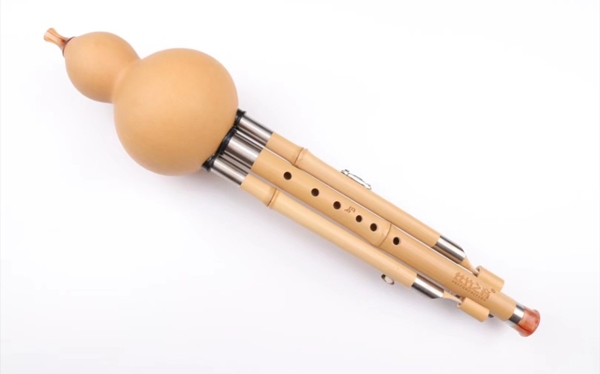Detailed Explanation of Posture and Holding Techniques in the Performance Art of Hulusi
Hulusi, as a unique reed instrument in the ethnic minority areas of Yunnan, China, is deeply loved by people for its unique timbre and melodious melody. In the process of learning and playing gourd silk, the correct posture and holding method not only affect the image and professionalism of the performance, but also are important factors that affect the performance skills, timbre quality, and the physical and mental health of the performer.

Posture section
Stand up performance
When standing and playing, the body should remain naturally straight but not too stiff. The feet should be slightly separated and can stand steadily in an outward shape to ensure stability and balance. The center of gravity is evenly distributed between the legs, facilitating necessary body movements in stage performances. Keep your head straight, look ahead, and show a confident and focused expression. Shoulders should be relaxed, and shoulders should not be shrugged or collapsed. The chest should be slightly raised to facilitate smooth breathing. Bend your arms at a natural angle, forming an angle of approximately 45 degrees between your elbows and waist. Hold gourd silk in both hands, making it roughly at a 45 degree angle with your upper body. This helps with breath control and flexible finger movements.
Sitting performance
Sitting performance requires the back to be perpendicular to the back of the chair, sitting in the front one-third of the chair, with both feet flat on the ground, allowing the center of gravity to be spread out from front to back, while also maintaining a straight waist without hunching. Raise both arms while maintaining a 45 degree angle between the elbows and the body, ensuring that the wrists are relaxed and there is enough space for finger movements. Whether playing upright or seated, it is necessary to avoid muscle tension and ensure a relaxed state throughout the body, especially in the arms, fingers, and neck.
Holding the Dharma
The method of holding the gourd silk is a crucial step in ensuring accuracy and timbre. The left hand is usually located above the gourd part, and the right hand is located below. The fingers naturally bend and gently press the edge of the sound hole with the fingertips, using the fingertips to contact for the best sealing effect. During the playing process, the fingers should not be raised too high. It is generally recommended to be about 2-3 centimeters away from the sound hole, as too high can cause the fingers to move too far, affecting the playing speed and accuracy.
In addition, the blowing part (i.e. the position of the reed) should make perfect contact with the lips, forming a suitable "air door", which is the breathing channel between the upper and lower lips. According to the different pitches played, the size of the air damper needs to be adjusted appropriately. The air damper is relatively small at low frequencies and appropriately increased at high frequencies.
In summary, mastering the correct posture and holding technique of hulusi performance is a fundamental skill that every hulusi enthusiast must cultivate from beginner to master. It not only helps to improve performance skills, but also significantly enhances the overall artistic expression of the performer.
 渝公网安备 50010702504639号
渝公网安备 50010702504639号